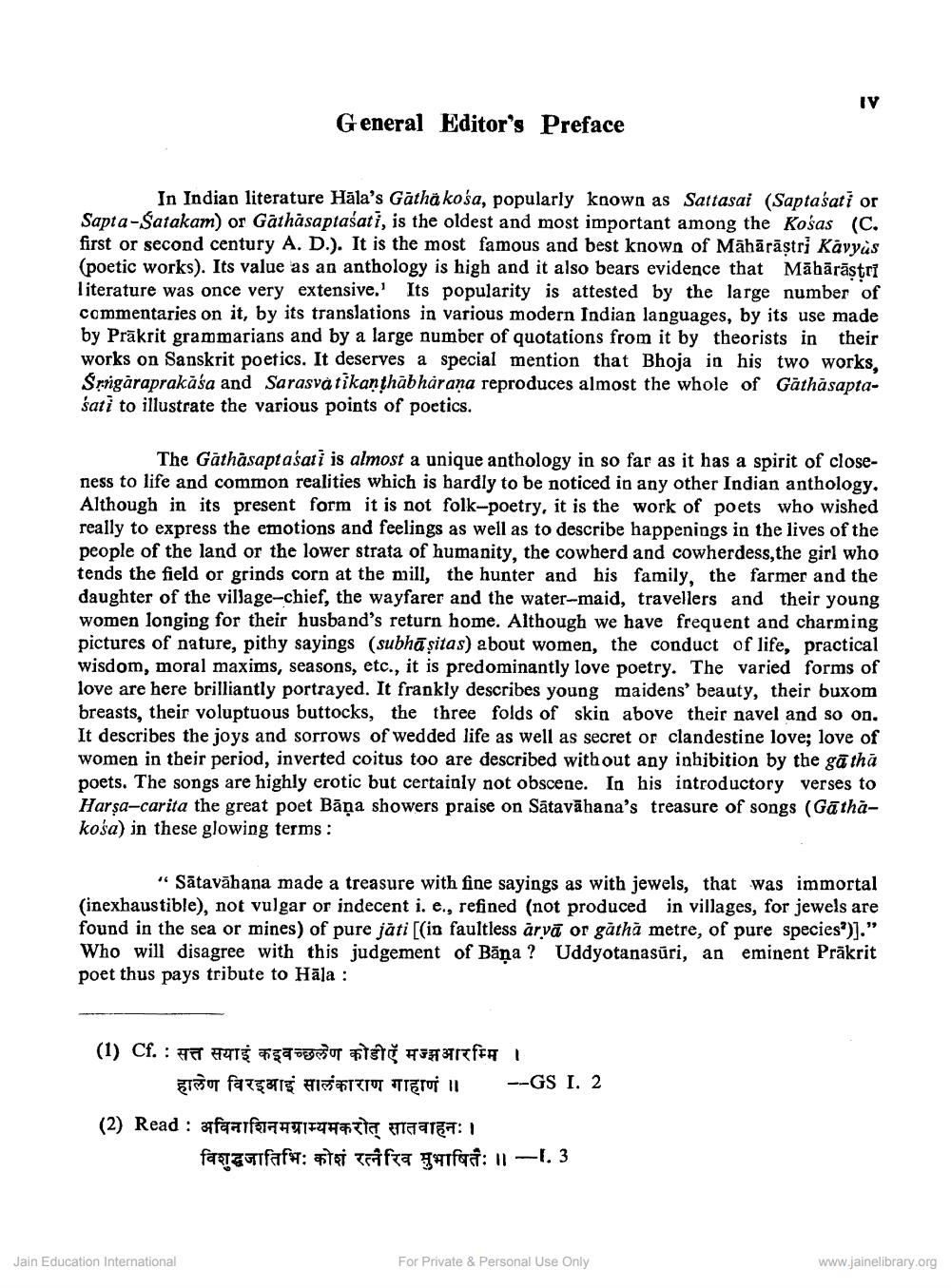Book Title: Gahakoso Part 2 Author(s): Madhav Vasudev Patvardhan, Dalsukh Malvania, H C Bhayani Publisher: B L Institute of Indology View full book textPage 8
________________ General Editor's Preface In Indian literature Hāla's Gathä kośa, popularly known as Sattasai (Saptaśati or Sapta-Satakam) or Gathāsaptašati, is the oldest and most important among the Kośas (C. first or second century A. D.). It is the most famous and best known of Māhāräştri Kavyús (poetic works). Its value as an anthology is high and it also bears evidence that Māhārāstri literature was once very extensive. Its popularity is attested by the large number of commentaries on it, by its translations in various modern Indian languages, by its use made by Prākrit grammarians and by a large number of quotations from it by theorists in their works on Sanskrit poetics. It deserves a special mention that Bhoja in his two works, Smigaraprakāśa and Sarasvatikanthābharana reproduces almost the whole of Gāthasaptaśati to illustrate the various points of poetics. The Gathāsaptaśari is almost a unique anthology in so far as it has a spirit of closeness to life and common realities which is hardly to be noticed in any other Indian anthology, Although in its present form it is not folk-poetry, it is the work of poets who wished really to express the emotions and feelings as well as to describe happenings in the lives of the people of the land or the lower strata of humanity, the cowherd and cowherdess, the girl who tends the field or grinds corn at the mill, the hunter and his family, the farmer and the daughter of the village-chief, the wayfarer and the water-maid, travellers and their young women longing for their husband's return home. Although we have frequent and charming pictures of nature, pithy sayings (subhā șitas) about women, the conduct of life, practical wisdom, moral maxims, seasons, etc., it is predominantly love poetry. The varied forms of love are here brilliantly portrayed. It frankly describes young maidens' beauty, their buxom breasts, their voluptuous buttocks, the three folds of skin above their navel and so on. It describes the joys and sorrows of wedded life as well as secret or clandestine love; love of women in their period, inverted coitus too are described without any inhibition by the gātha poets. The songs are highly erotic but certainly not obscene. In his introductory verses to Harsa-carita the great poet Bāņa showers praise on Sātavāhana's treasure of songs (Gā thăkoša) in these glowing terms: “Sātavāhana made a treasure with fine sayings as with jewels, that was immortal inexhaustible), not vulgar or indecent i. e., refined (not produced in villages, for jewels are found in the sea or mines) of pure jāti [(in faultless āryā or gāthà metre, of pure species”)].” Who will disagree with this judgement of Bāņa ? Uddyotanasūri, an eminent Prākrit poet thus pays tribute to Hāja : (1) Cf. : T&T HITS #59750 #isti #FATEH Etator farçar HIFTTT TIETO II --GS I. 2 (2) Read : farf a ttar a : 1 fata ufafa: fleira Afga: 11 -1.3 Jain Education International For Private & Personal Use Only www.jainelibrary.orgPage Navigation
1 ... 6 7 8 9 10 11 12 13 14 15 16 17 18 19 20 21 22 23 24 25 26 27 28 29 30 31 32 33 34 35 36 37 38 39 40 41 42 43 44 45 46 47 48 49 50 51 52 53 54 55 56 57 58 59 60 61 62 63 64 65 66 67 68 69 70 71 72 73 74 75 76 77 78 79 80 81 82 ... 278
